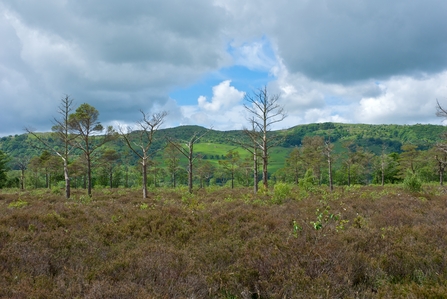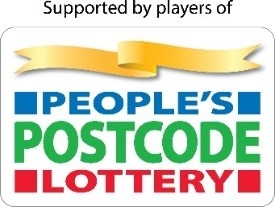
We have bought a field next to Nichols Moss Nature Reserve, enabling us to restore its damaged peatlands © John Morrison
Gifting membership? Order by Wednesday 17 December in time for Christmas.

We have bought a field next to Nichols Moss Nature Reserve, enabling us to restore its damaged peatlands © John Morrison
Healthy peatlands store vast amounts of carbon—twice as much carbon as all the world’s forests. Bogs can be an ally in the fight to address the climate emergencyStephen TrotterCEO, Cumbria Wildlife Trust
Cumbria Wildlife Trust has bought a 5.5 hectare field next to Nichols Moss Nature Reserve near Witherslack. This will nearly double the size of the peatland nature reserve. The acquisition will enable us to restore the damaged peatland which sits beneath the field, to bring back lost wildlife to the site and importantly, to protect and safeguard the huge amounts of CO2 that are locked-up in the buried peat.
Stephen Trotter, Chief Executive of Cumbria Wildlife Trust said: “Our newly acquired field is nearly the size of eight football pitches. It means that we’ll be able to restore and enlarge our nature reserve at Nichols Moss, which forms part of a mosaic of internationally-important wetland habitats. We’ll also be working with local farmers, to provide advice and support to those who wish to undertake environmental work on their land. We’re very grateful to players of People’s Postcode Lottery (PPL), as money raised by them has made this land purchase and peat restoration work possible. With more than 35,000ha of damaged peat bogs still to restore in Cumbria, our task is a massive one, so huge thanks to the players of People’s Postcode Lottery, your support is vital and timely.”
Out of sight, a huge amount of deep and shallow peat sits beneath the currently grassy field. Our priority will be to raise the water table level to preserve these layers in situ. An exposed area of dried bare peat is the initial priority for restoration, to prevent further loss of carbon to the atmosphere.
Over the next few years, wildlife-rich bog vegetation such as Sphagnum moss will be brought back to the site, so it can once again actively draw down and store carbon safely below ground.
Stephen Trotter said: “Nichols Moss is a raised mire which means that it receives moisture entirely from rainfall. Since the end of the last ice age, wet conditions have allowed peat, which is almost entirely made of stored carbon, to accumulate to a depth of five or so metres. Colourful Sphagnum mosses, cottongrass, cranberry, bog rosemary and bog asphodel are the main species you will see on the bog surface.”
“Healthy peatlands store vast amounts of carbon—twice as much carbon as all the world’s forests. Bogs can be an ally in the fight to address the climate emergency and by conserving, protecting and restoring peat soils, we can reduce emissions and revive an essential ecosystem that provides many services, for people, the planet, and the climate—including their vital role as a natural carbon sink. They’re also great for wildlife such as dragonflies and birds.”
“Sphagnum mosses are very special and they play a vital role in the creation of peat bogs, by storing water in their spongy forms. They can hold up to 20 times their weight in water, keeping the bogs wet and providing a habitat for a range of rare plants and animals. By keeping it wet, they prevent the growth of bacteria and fungi which would otherwise eat and consume the dead plant material, releasing carbon dioxide into the atmosphere as they grow. A carpet of Sphagnum grows slowly, drawing down extra carbon from the atmosphere and adding it to the peat mass below.”
We protect 430 hectares of fragmented wetlands across Nichols Moss, Meathop Moss and Foulshaw Moss in South Lakeland. These mosses were historically far more extensive, stretching along the north side of the Kent estuary and the low-lying land of the Lyth and Winster valleys.
These three raised bogs are a haven for an array of rare and specialist wildlife, some of which only occur on these threatened bog habitats. As a result, the bogs are of national and international importance and they are protected as a Special Area of Conservation and as Sites of Special Scientific Interest.
The purchase of the 5.5 hectares of land adjoining Nichols Moss Nature Reserve was made possible thanks to £2 million from People’s Postcode Lottery’s Postcode Climate Challenge initiative, designed to support projects tackling climate change. It is one of 12 Wildlife Trust nature recovery projects around the UK to be supported with this money.

People’s Postcode Lottery manages lotteries on behalf of 20 Postcode Trusts. People play with their chosen postcodes for a chance to win cash prizes. A minimum of 33% from each subscription goes directly to charities and good causes in Britain and internationally.